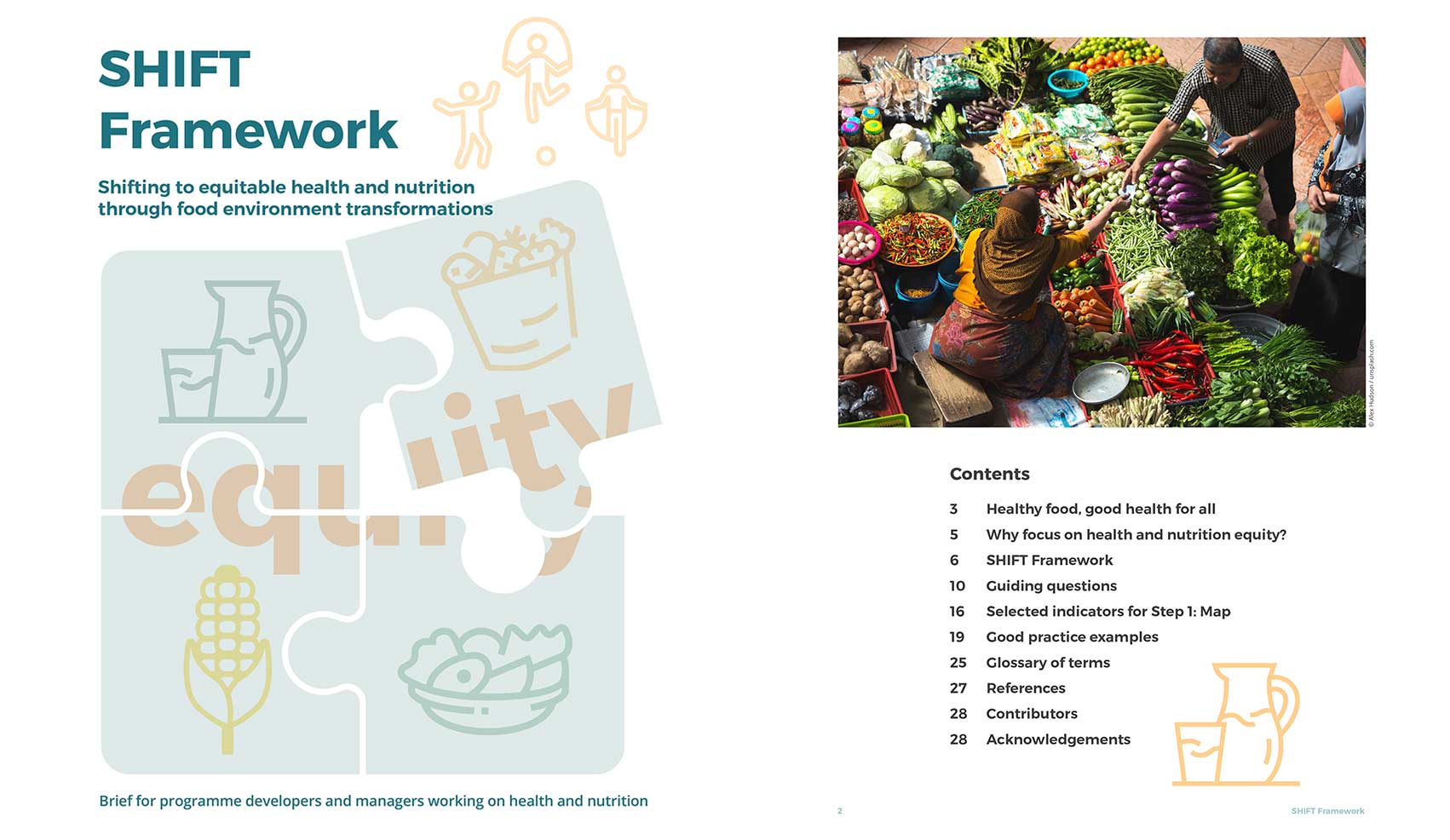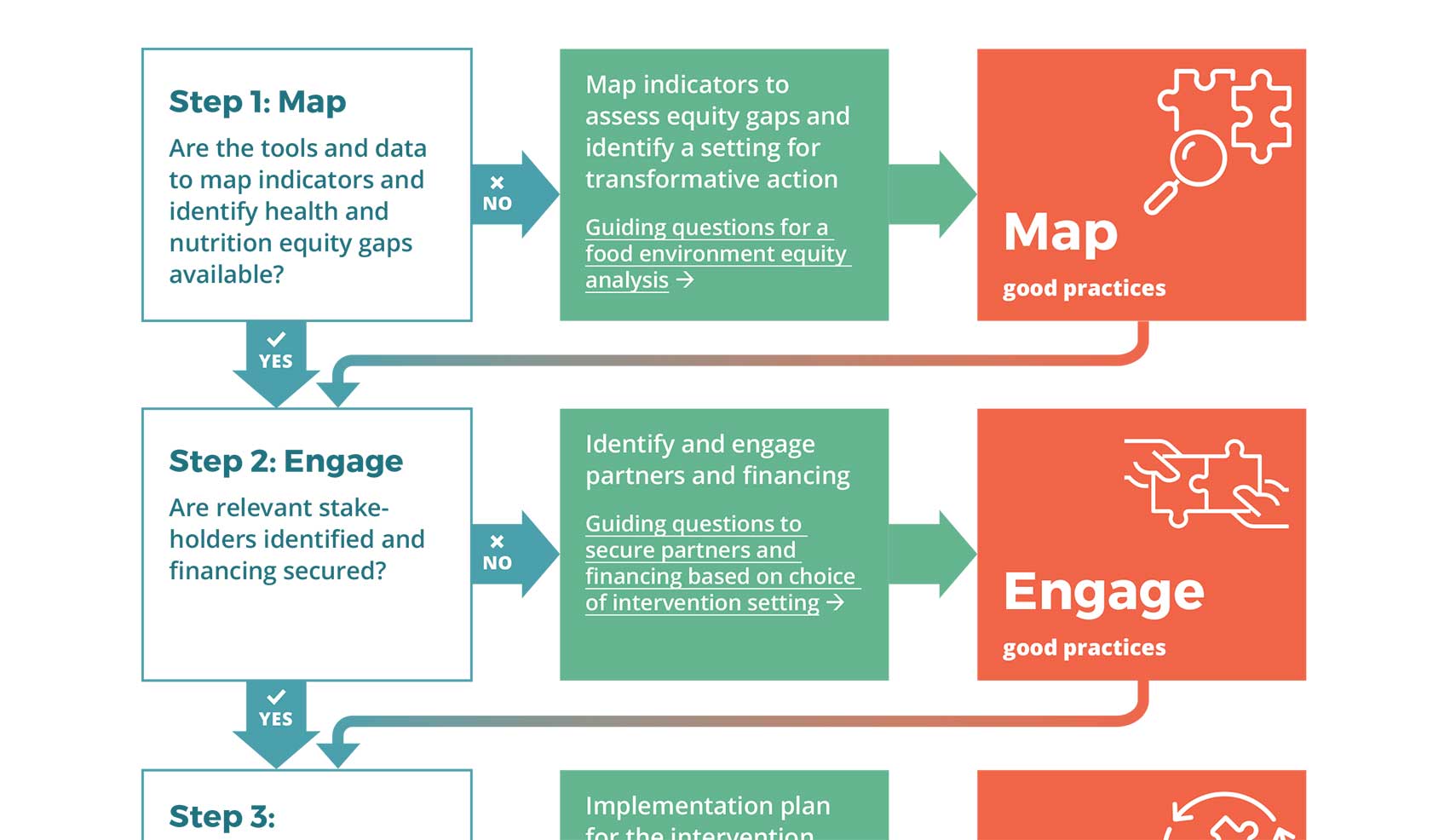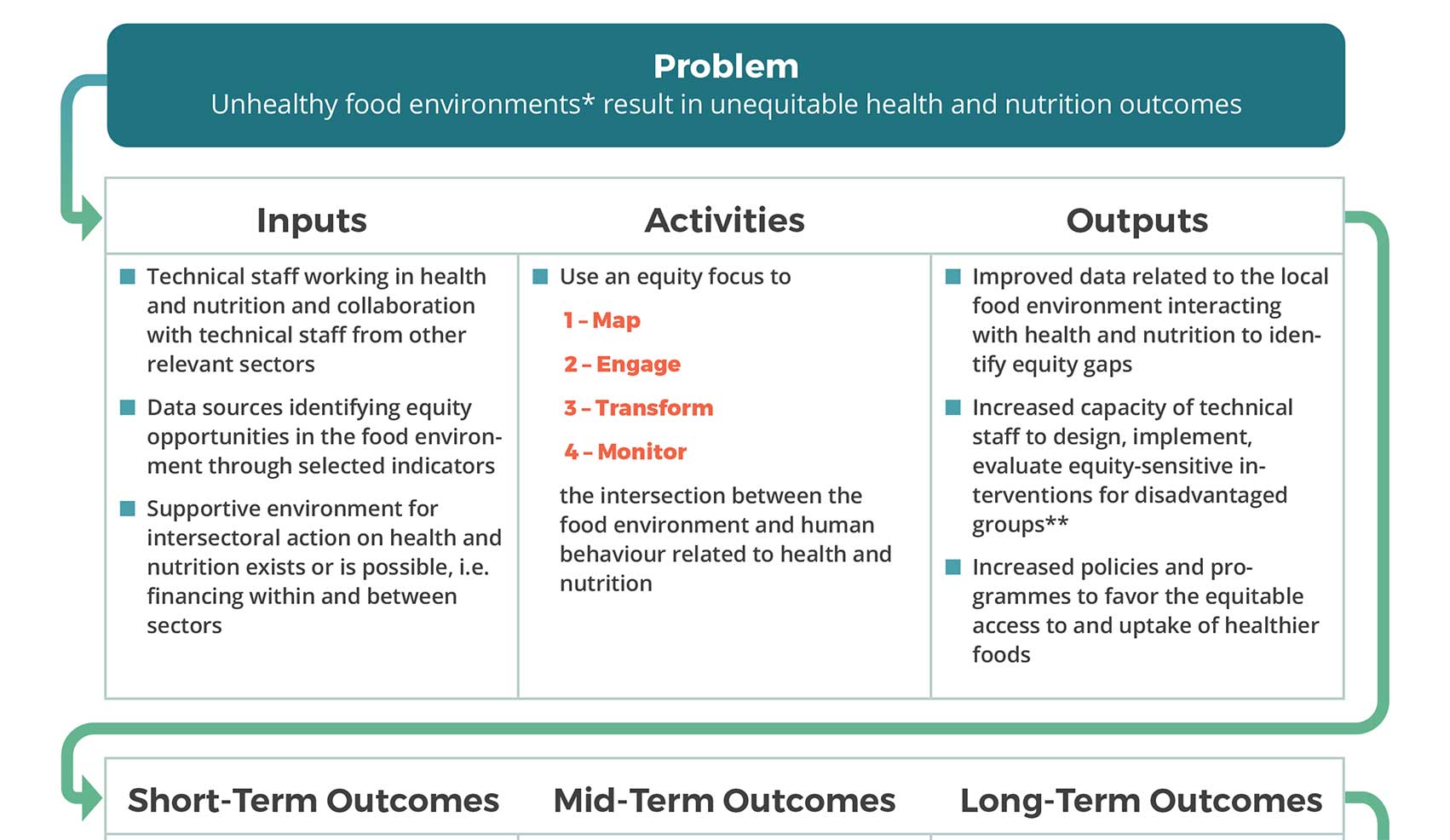Glossary of Terms
Adapted from the Food and Agricultural Organization of the United Nations and the Global Nutrition Report
Action settings: Physical spaces defined by geographic, functional and regulatory boundaries where interventions can disproportionately reach target populations and equity can have larger gains such as, schools, workplaces, elderly homes, community hubs, etc.
Double-duty actions: Interventions, programmes and policies that have the potential to simultaneously impact both ends of the malnutrition spectrum, i.e., reduce the risk or burden of both undernutrition (including wasting, stunting and micronutrient deficiency or insufficiency) and overweight, obesity or diet-related NCDs. For more information, link.
Equity-focused actions: Equity-focused actions refer to interventions and policies that aim at reducing inequalities in order to level up outcomes. This can be done by focusing on the most vulnerable groups (targeting) and by policies that are universal but implemented at a scale and intensity according to the level of need (proportionate universalism).
Food environment: Physical, economic, political and socio-cultural context in which consumers engage with the food system to make their decisions about acquiring, preparing and consuming food.
Food security: Food security exists when all people, at all times, have physical, economic and social access to sufficient, safe and nutritious food to meet their dietary needs and food preferences for an active and healthy life.
Food systems: encompass the entire range of actors and their interlinked value-adding activities involved in the production, aggregation, processing, distribution, consumption and disposal of food products that originate from agriculture, forestry or fisheries, and parts of the broader economic, societal and natural environments in which they are embedded.
Good practice: an exemplary intervention that through experience in a real life setting has proven to reliably achieve results in terms of adequacy (ethics and evidence) and equity as well as effectiveness and efficiency related to process and outcomes. These interventions may be contextualized and scaled up so as to benefit more people. This process of expansion and scaling up of successfully tested best practices requires strategic planning.
Health: State of complete physical, mental and social well-being and not merely the absence of disease or infirmity. The enjoyment of the highest attainable standard of health is one of the fundamental rights of every human being without distinction of ethnicity, religion, political belief, economic or social condition.
Health equity: Absence of avoidable or remediable differences in health within and between groups of people, whether those groups are defined socially, economically, demographically or geographically.
Malnutrition: Both ends of the nutrition spectrum from undernutrition (including stunting, wasting, underweight and micronutrient deficiencies) to overweight and obesity, both predisposing to and co-existing with diet-related NCDs.
Noncommunicable diseases (NCDs): diseases that are the result of a combination of genetic, physiological, environmental and behavioural factors, often of long duration and referred to as chronic diseases. The five NCDs in focus in the WHO’s 5x5 matrix are cardiovascular diseases (such as heart attacks and stroke), cancers, chronic respiratory diseases (such as chronic obstructive pulmonary disease and asthma), diabetes, and mental and neurological conditions. Four of five NCDs are directly related to four of ten global nutrition targets adopted at the World Health Assembly in 2013, to be attained by 2025.
Nutrition: Nourishment or energy that is obtained from food consumed; the process of consuming the proper amount of nourishment and energy.
Nutrition equity: Equal access to nutritious and culturally appropriate food, regardless of geographic location, age, gender, ethnicity, education and wealth.
Socio-economic determinants of health: Many factors combined affect the health of individuals and communities. Health outcomes and health inequalities are influenced by the social, cultural, economic, environmental and political determinants of health – the conditions in which we are born, grow, live, work and age. Collectively these are called Social Determinants of Health.
Sustainable food system: A food system that delivers food security and nutrition for all in such a way that the economic, social and environmental bases to generate food security and nutrition for future generations are not compromised; it is profitable throughout (economic sustainability), has broad-based benefits for society (social sustainability) and a positive or neutral impact on the natural environment (environmental sustainability).
Vulnerable populations: Populations at a higher risk for unhealthy diets and poor health due to unfavourable social, political and environmental conditions, such as women, children, indigenous populations, disadvantaged migrants, etc.


